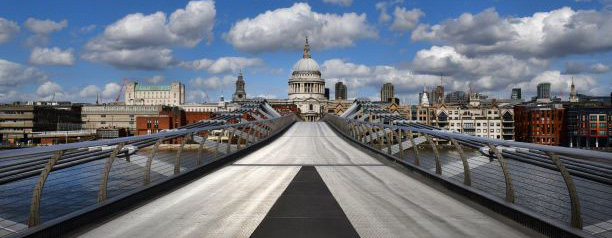The city is dead, long live the city!
Liam Bailey, Knight Frank’s Global Head of Research, questions the sustainability of Covid-inspired urban flight, and points to the need to reinvent the city
4 minutes to read

On a surprisingly crisp morning at the beginning of September, I walked from St. Paul’s underground station to a meeting deep in the City of London. Of course, I’d heard Covid had meant the City was quiet... but this? After reconfirming the venue, our preferred coffee shop being shuttered, I lingered over a white Americano while I waited for my guest and reflected on the empty streets.
While things were certainly quiet, the reality was that London, like most major cities, was slowly, very slowly, coming back to life. There were more office workers, cleaners and baristas wending their way through the ancient streets and glossy modern buildings than a few weeks earlier, and it certainly felt very different to the virtually lifeless streets a few months before that, shortly after the UK’s Covid lockdown had been lifted.
However, nearly a year after the first rumours of a new flu-like ailment began to surface, and despite nascent improvements, the CBDs of London, New York, Paris, indeed almost all major cities, remain significantly changed. With surveys reporting that a large majority of workers want to continue working from home, or at least have the choice to work remotely when possible plus leading banks and professional-services firms seemingly falling over themselves to promise that home working will remain long after the pandemic retreats – it is easy to understand why this change is being predicted as the new normal.
Evidence from the housing market points to even more significant changes. As our own data at Knight Frank confirms, over recent years seven out of every ten London-based home buyers wanted to buy in London, but post-lockdown this figure has slumped to three in ten – with the majority looking to distant English shires to build their new lives away from the pandemic.
After the experience of lockdown, the aspiration for a larger home, with room for an office, somewhere for children to study and a garden is perfectly understandable. But there is a problem with this shift. If Londoners really turned their backs on city living, the south of England would struggle to cope – especially if the denizens of other cities joined the stampede.
The risk of covering the south of England in tarmac and concrete is real, but there is a more significant problem, which affects even countries with the room to accommodate legions of new suburban or rural dwellers – a decline of city living would prove to be very eco-unfriendly.
It isn’t the bucolic home in Sussex in England, or Connecticut in the US that promises low-impact living, rather it is the grimy, crowded, sodium-lit city that proves to be the most sustainable place to live.
Depending on which study you read, the world’s city dwellers account for between 25% and 48% less carbon dioxide emissions than their rural counterparts. Density delivers substantial transport and energy savings for workers, goods and services.
Giving up on city living would have a significant environmental impact – with worse congestion, and more damage to eco-systems as urban sprawl led to vast areas of land being converted to roads and homes and the necessary requirements of extended suburbia. There is also an economic payoff. Cities have long been recognised as the best environment to encourage wealth creation. Cities benefit from agglomeration; pushing many millions of people together supports productivity, innovation and ultimately economic growth.
At the same time, they act as incubators of creativity. There is an urgent post-Covid challenge to help heal the city. To remedy the problems that have forced so many to consider abandoning them. What opportunities do changes in working patterns create for the use of buildings? What lessons can the inner suburbs provide for urban centres? Throughout the crisis the inner-ring of apartment blocks and denser neighbourhoods adjacent to the centre tended to fare better than the centre itself.
Rather than herald the end of the city, Covid, like many crises before, will likely inspire an evolution. It is an opportunity to rethink how urban life is best lived. Once the immediate crisis is behind us and the attractions of city living (bars, restaurants, galleries and parks) are open to us without unusual distancing, new residents will be attracted into the melee even if they want to reshape what it means to live in the city. Fixing the city will prove to be the most sustainable outcome from this crisis.
Discover more insight in VIEW magazine, our flagship residential publication dedicated to showcasing the finest property across the world. VIEW explores how people’s views about property are changing and looks at how we can all make our lifestyle more sustainable through a change in daily actions.